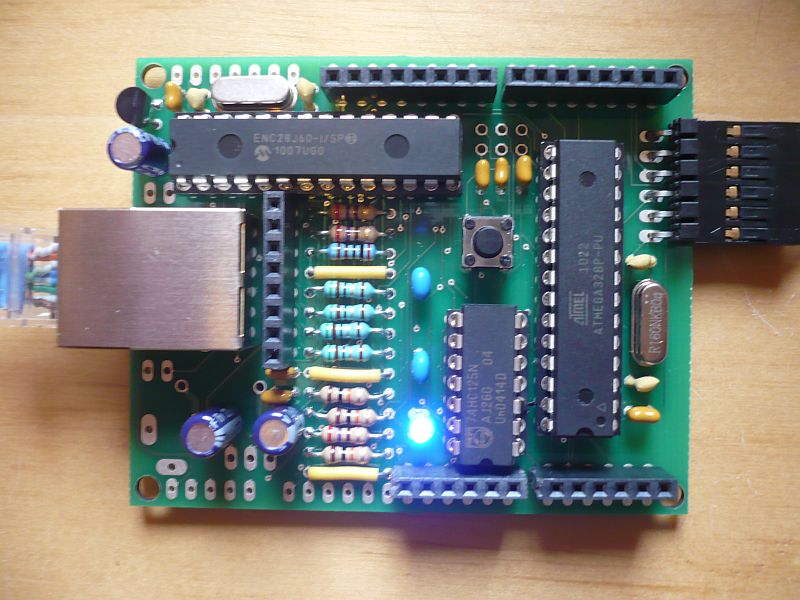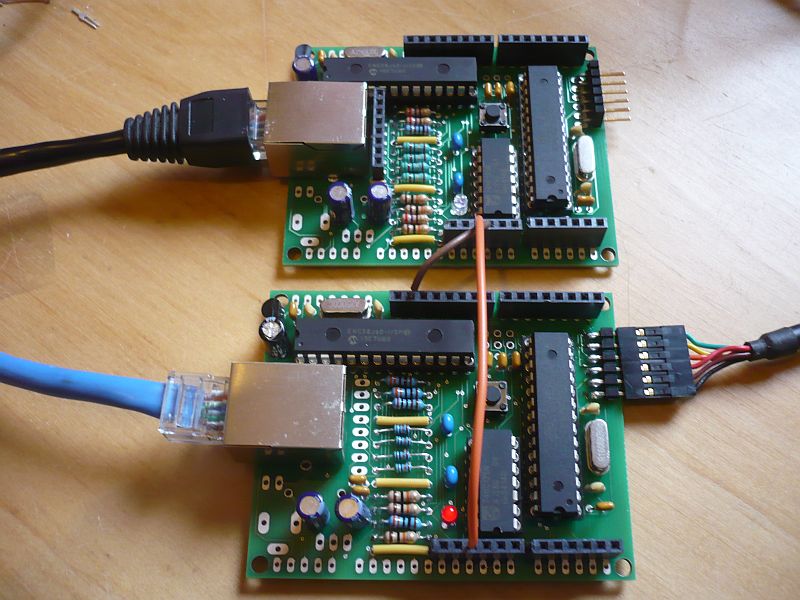Project:Nanode
New page for Ken's new project 'Nanode' (formerly 'Ethernet Arduino')
About the Nanode - Some Background
The Nanode is a low cost entry device aimed at Internet Connectivity projects. It has been designed to be built easily for under £20 - so that it will appeal to those on a tight budget.
It is based on the Arduino environment so will be familiar to many. It will accept Arduino shields, if necessary with longer pins to mprove clearance between the Magjack connector and the underside of the shield.
It consists of a small PCB which has the ATmega328 microcontroller, some glue logic, the ENC28J60 ethernet controller and Magjack. The board only uses through-hole and DIL conventional components - so that it can be easily assembled by anyone who has bassic solderng skills.
It makes an ideal project for a teaching workshop on web connectivity, and as such will appeal to Hackspaces for advanced Arduino workshops.
It can be used as a micro web-server, for home automation and control, web connected sensor networks and many other applications. By removing the ethernet controller and Magjack, it becomes a low cost Arduino "work-alike".
Several Nanodes can be connected together on a multidrop serial bus. This network supplies communications and power and can be made from low cost 4 core telephone cable. Individual Nanodes can communicate via this network back to an ethernet connected "Master" unit. With RS485 driver ICs, the Nanode can be adapted as a DMX lighting controller, MIDI network or other serial control system.
Nanode is an Open Source Project.
Bare board waiting list
This is the waiting list for the first production run' of bare PCBs.
Please add your name and the number of PCBs that you would like to the list below:
The First Prototypes
Here are the two boards each connected to a network port. The orange and brown wires between the boards is so that they can share the 5V power from the FTDI cable.
The upper board is the Publisher (Putter) and the lower board is the Subscriber (Getter). Every few seconds the Putter sends a new packet of data up to Pachube feed 8729, and at regular intervals the Getter subscribes to this feed to retrieve the data. In this case the data is a simple comma separated list of 6 arguments, which could be six readings from the ADCs on the Putter device, or a numerical command to which the Getter will respond.
Building a Nanode
The complete step by step build sequence can be found on my blog

